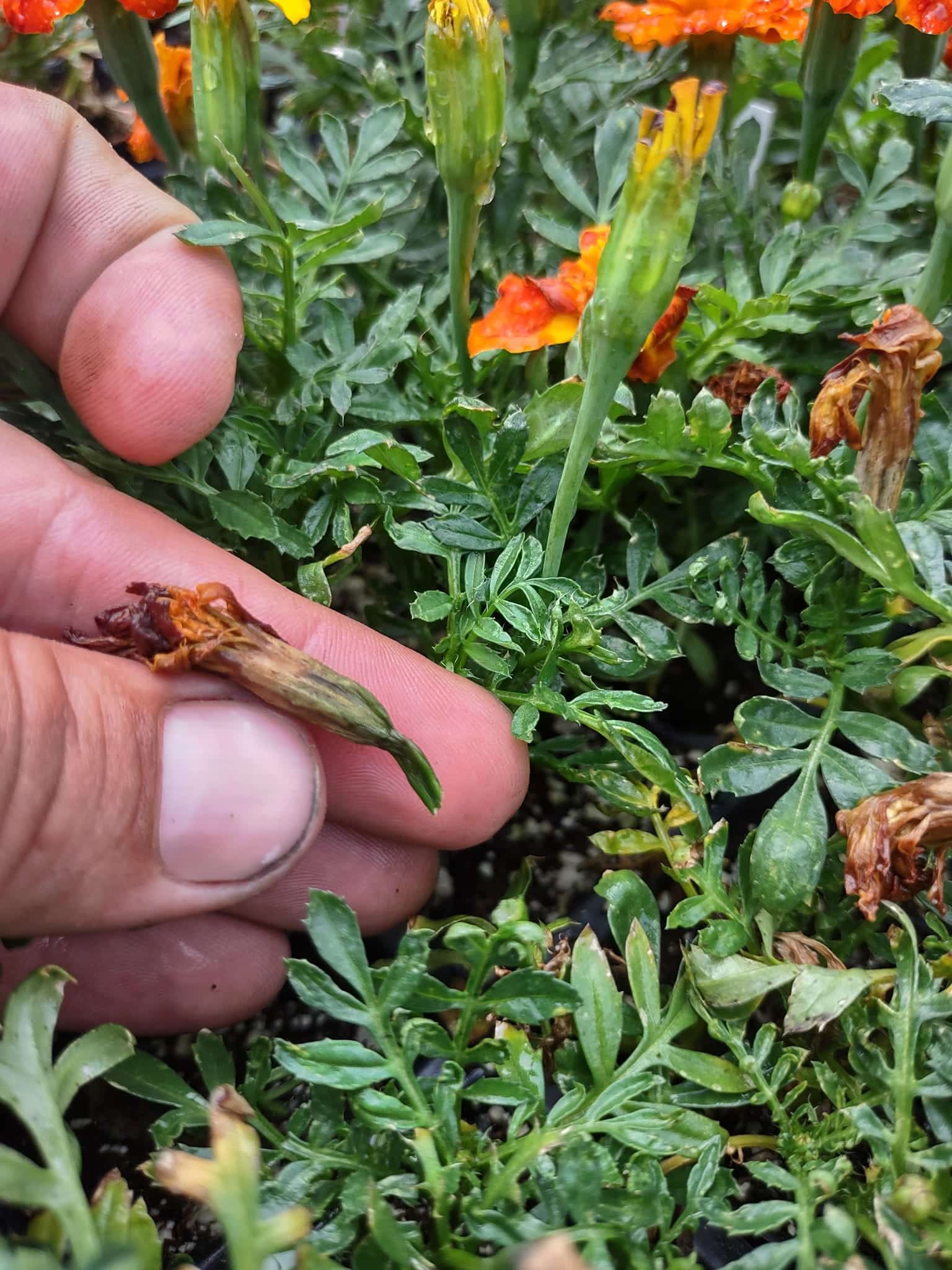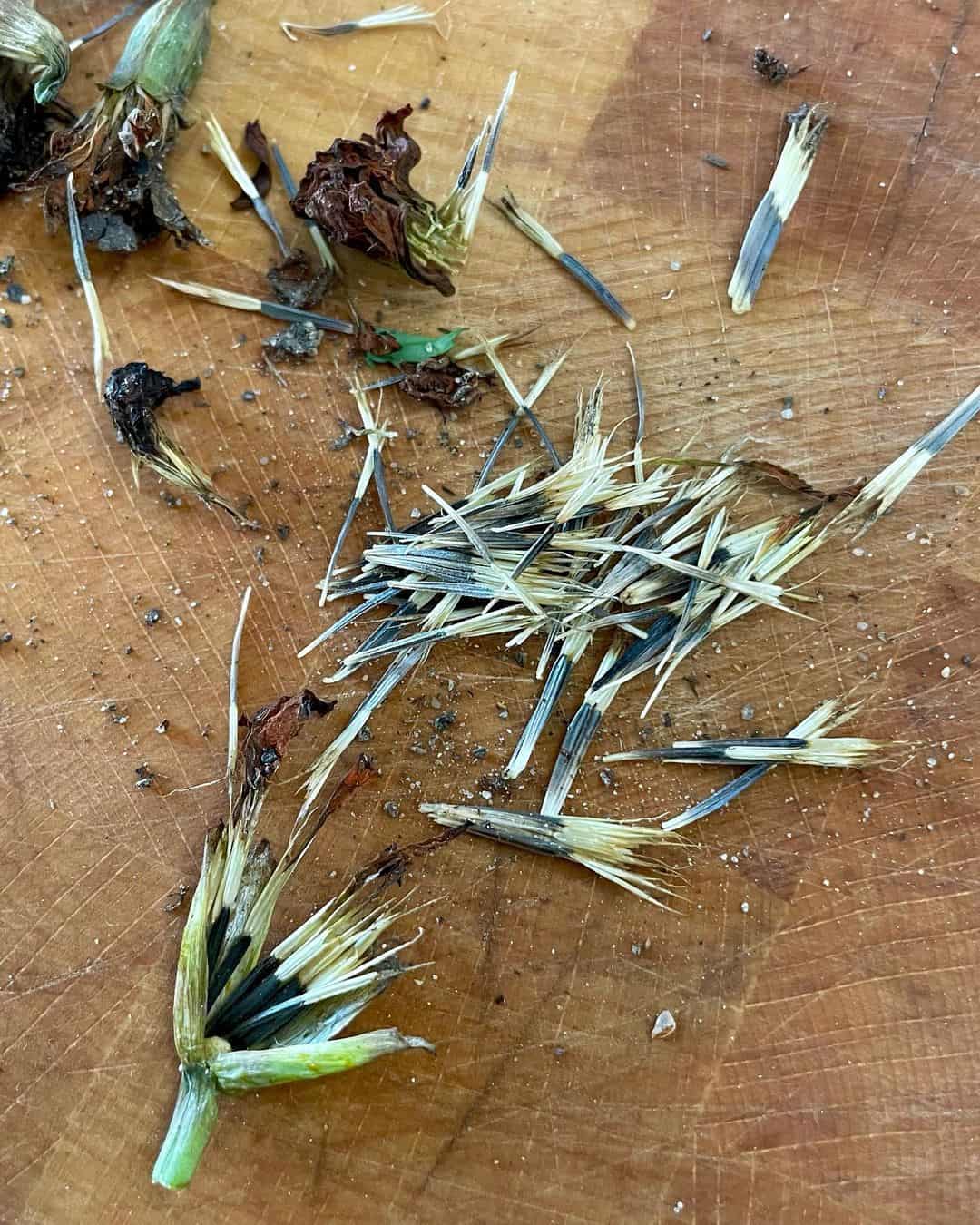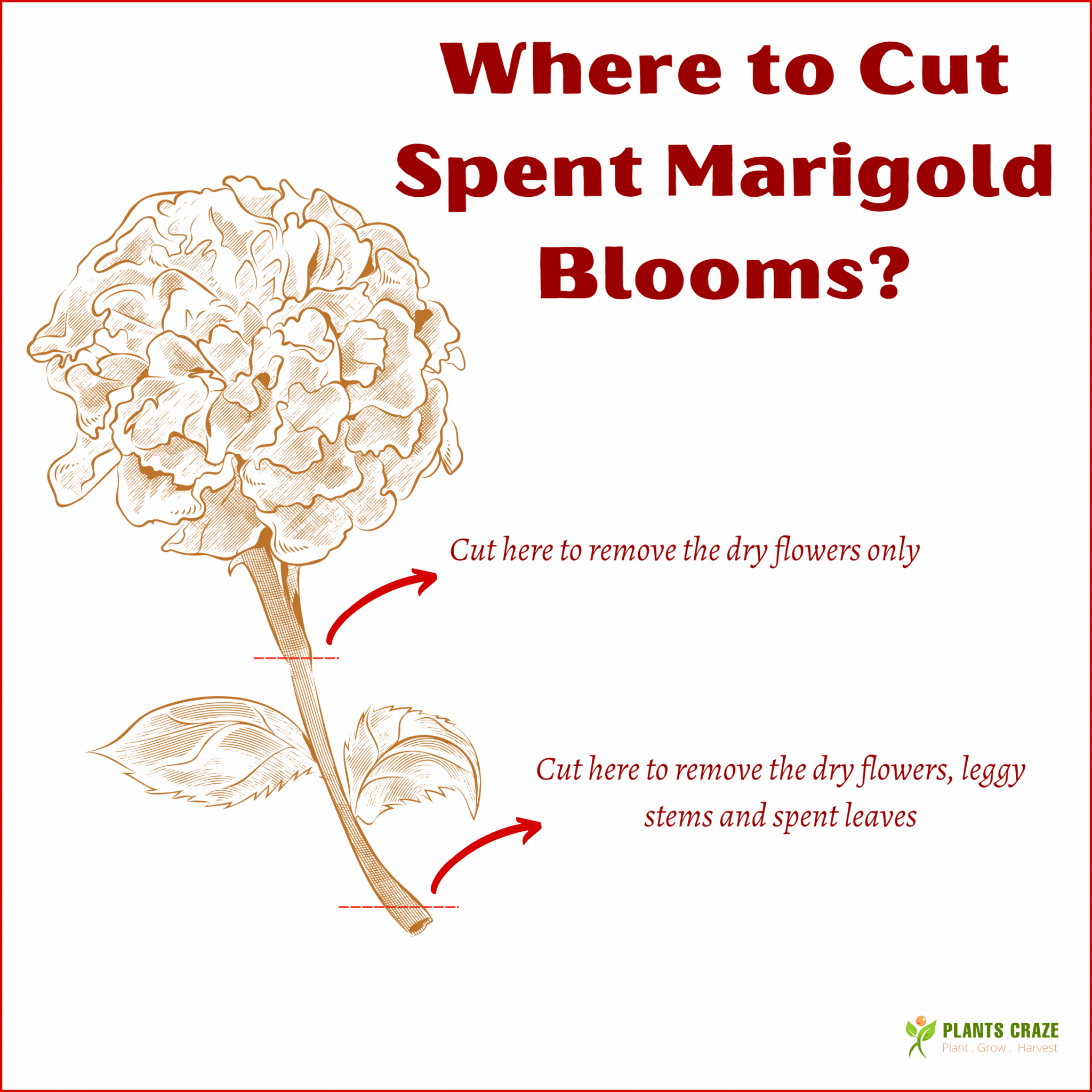Do you know deadheading helps Marigolds revive their younger self? Meaning the plant will sprout new buds and bloom profusely evermore!
So, why wait to keep your Marigolds on flowering pressure? This article will teach you the basics of the process of deadheading Marigolds.
Table of Contents Show
Is it Necessary to Deadhead Marigolds?
Marigolds are self-seeding annuals, growing, blooming, and seeding throughout spring and summer.
They die back, all before the first frost of winter but drop their seeds in the soil before perishing to grow back again.
Their flowering spell lasts around 5-6 months, during which you can deadhead the spent flowers off the plant.

Additionally, deadheading offers specific benefits to Marigolds. Let’s see some below!
- Deadheading Marigold helps conserve energy which in turn encourages a longer blooming period.
- It gives the plant a well-groomed look, contributing to much cleaner garden beds.
- Also, it discourages random self-seed sowing of the plant.
- It makes the plant more robust and bushier, with more stems and leaves to protect the buds.
- Deadheading spent flowers means the excuse to harvest Marigold seeds for growing the next batch of seedlings.
Mexican Tarragon, Lemmon’s Marigolds, and Mountain Marigolds are perennial Marigold varieties growing throughout hardiness zones 9 and above.
When to Deadhead Marigold?
Normally, the flowering spells for most Marigold varieties last 5-6 months.
Each yellowish-orangey bloom in the Marigold plant lasts only 1-2 weeks, after which their petals droop and turn brown, papery, and crisp.

Afterward, you can selectively continue to deadhead the spent Marigold flowers throughout the summer and fall until the first hard frost.
If you are growing Marigolds in large planters or garden beds, deadhead them every 3 weeks.
However, remove the spent blooms weekly to deadhead the Marigolds in small pots.
How to Deadhead Marigolds?
Here is an easy, simple step to deadhead Marigolds.
- Inspect for dead blooms. Notice any flowers with unsightly petals and plan out a grooming regimen.
- Using sterilized pruners, cut the dead flower below the calyx or close to the first set of leaves.

- You can also pluck the dried flower with your hands and collect them for seeds.
- After, selectively prune all other defective flowers and dying or leggy stems and leaves.
- Carefully burn the parts to prevent the extent of possible infestations.
Here’s a full-guided video to deadhead Marigolds.
How to Look for Marigold After Deadheading?
Aftercare for deadheaded Marigolds is important to help them overcome pruning stress.
Here are a few care tips for Marigold after deadheading until the plant retains new blooms.
- For flower development, offer your Marigolds at least 6-8 hours of bright direct sunlight daily.
- Regularly water your Marigolds every 2 weeks following pruning to overcome pruning stress.
- Use phosphoric fertilizers every 4-6 weeks from early spring until late summer to promote vigorous blooms.
- Provide well-aerated, loamy, and organic soil with a pH between 5.8 and 7.

- Maintain ambient humidity levels of around 40-60% to encourage flowering.
- Mix 1 ounce of neem oil with a gallon of water to richly spray Marigolds during pest or disease outbreaks.
- Maintain a distance of 8-12 inches between Marigold plants while planting in garden beds to avoid competition.
- While growing Marigolds indoors, plant them individually in terracotta planters to ensure a breathable potting environment.
- Plant Marigolds with herbs, vegetables, and other ornamental flowers to keep pests or diseases at bay and strengthen their flowering appeal.
From Editorial Team
Salvage Marigold seeds from the flowers!
Tug the dry Marigold petals from the spent blooms, peel open the papery brown sheath, and store the seeds in labeled paper envelopes.
You will have new batches of seeds this way for the next season.


